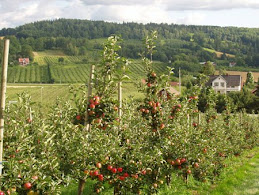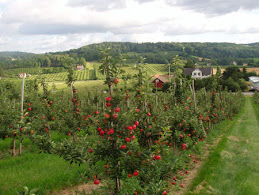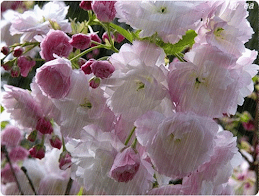
Tropical Fruits


Giant Prunes - sweet with a deep taste and a sticky chewy texture

Prunes - oval shape and a removable pit

Prunes - dried fruit is wrinkly in texture, and chewy on the inside

Giant Prunes - highest antioxidant of any fruit

Whole tree loaded with unripe prunes during the month of june
Facts about Prunes
Prunes are sweet with a deep taste and a sticky chewy texture, prunes are not only fun to eat but they are also highly nutritious. They are available all year round.
Four of the most common varieties are French, Imperial, Italian, and Green Gage.
Prunes also have the highest antioxidant of any fruit and its juice is fiber-rich.
Health benefits

They contain an antioxidant 'Phenols' which prevent damages cause by a dangerous oxygen radical called superoxide anion radical. Also they have proved to help prevent damage to our body fats.

Prunes has high content of Beta Carotene which is neccessary in cancer fighting and can help prevent conditions like heart disease, therosclerosis, colon cancer and diabetes.
Also this vitamin is known to reduce severe inflammatory conditions like osteoarthritis, asthma and rheumatoid arthritis.


Prunes prevent constipation. It provide bulk and decrease the transit time of fecal matter. This also decreases the risk of colon cancer.

When prunes are in the large intestine they provide 'food' for the friendly bacteria. When the prunes are fermented by this friendly bacteria they produce a short chain fatty acid called butyric acid which helps keep the colon healthy.

Also 2 other short chain fatty acids are created, propionic acid and acetic acid which the liver and muscles use as a fuel.

The soluble fiber in prunes can help normalize blood sugar levels. It delays the absorption of glucose into the blood by slowing down the rate at which food leaves the stomach. This soluble fiber increases insulin sensitivity which is useful in preventing and treating type 2 diabetes. Also prunes give a sense of 'fullness' after eating a meal which can prevent over eating in obese people.

Prunes are high in potassium which is essential for heart function and normal blood pressure.One quarter of a cup of prunes contains a 316.6 mg of potassium but only 1.7 mg of sodium. This help to prevent atherosclerosis and high blood pressure.

The high amount of potassium in prunes may also help in bone conditions. High salt diets lead to urinary calcium loss which causes thinning of the bones. The high potassium levels in prunes may counteract this.

Prunes contain amino acids and vitamins that help the body to absorb iron.

Prunes can be used as a natural sweetener. They are very sweet in taste and are a great alternative to sugar.

Prunes Nutrition Facts
From http://www.whfoods.com/genpage.php?tname=foodspice&dbid=103
| ||||||||||||||||||||||||||||||||||||||||||||||||||||||
In-Depth Nutritional Profile for Prunes

Prunes - Both fresh and dried are valuable

www.rarefruit-sa.org.au/Espalier/Fruit/Fruit.htm
www.prunes.net/
www.woodbridgefruittrees.com.au/html/plums.html
www.alibaba.com/.../Preserved_Prune.html
www.grandpasorchard.com/.../14/index.htm
ths.gardenweb.com/.../msg0902084120997.html
http://culinaryfool.spaces.live.com
www.organic-planet.com/products/b_Prunes.html
www.davidlebovitz.com/.../prune_blogging_2.html
http://jeenaskitchen.blogspot.com/2007/11/health-benefits-of-prunes.html
http://www.whfoods.com/genpage.php?tname=foodspice&dbid=103
http://www.candidablog.com/prune-juice-to-help-constipation.php
http://picasaweb.google.com/aritheeagle/STAYGREENFRESH#5044427185844145890









































.jpg)
.gif)
.jpg)




















































%20-%20%E5%82%B7%E5%BF%83%E7%9A%84%E8%B7%AF%20(Sh%C4%81ng%20x%C4%ABn%20de%20l%C3%B9)%20-%20The%20Road%20of%20Sorrow%20(With%20Subtitle)_11.png)


